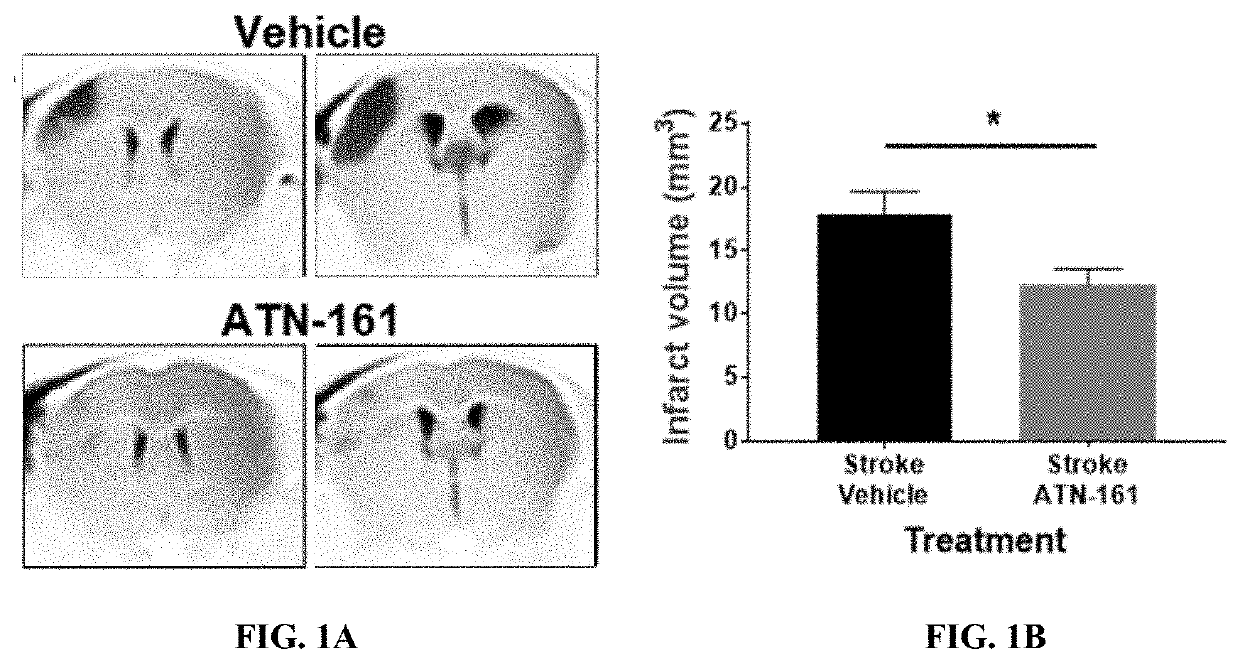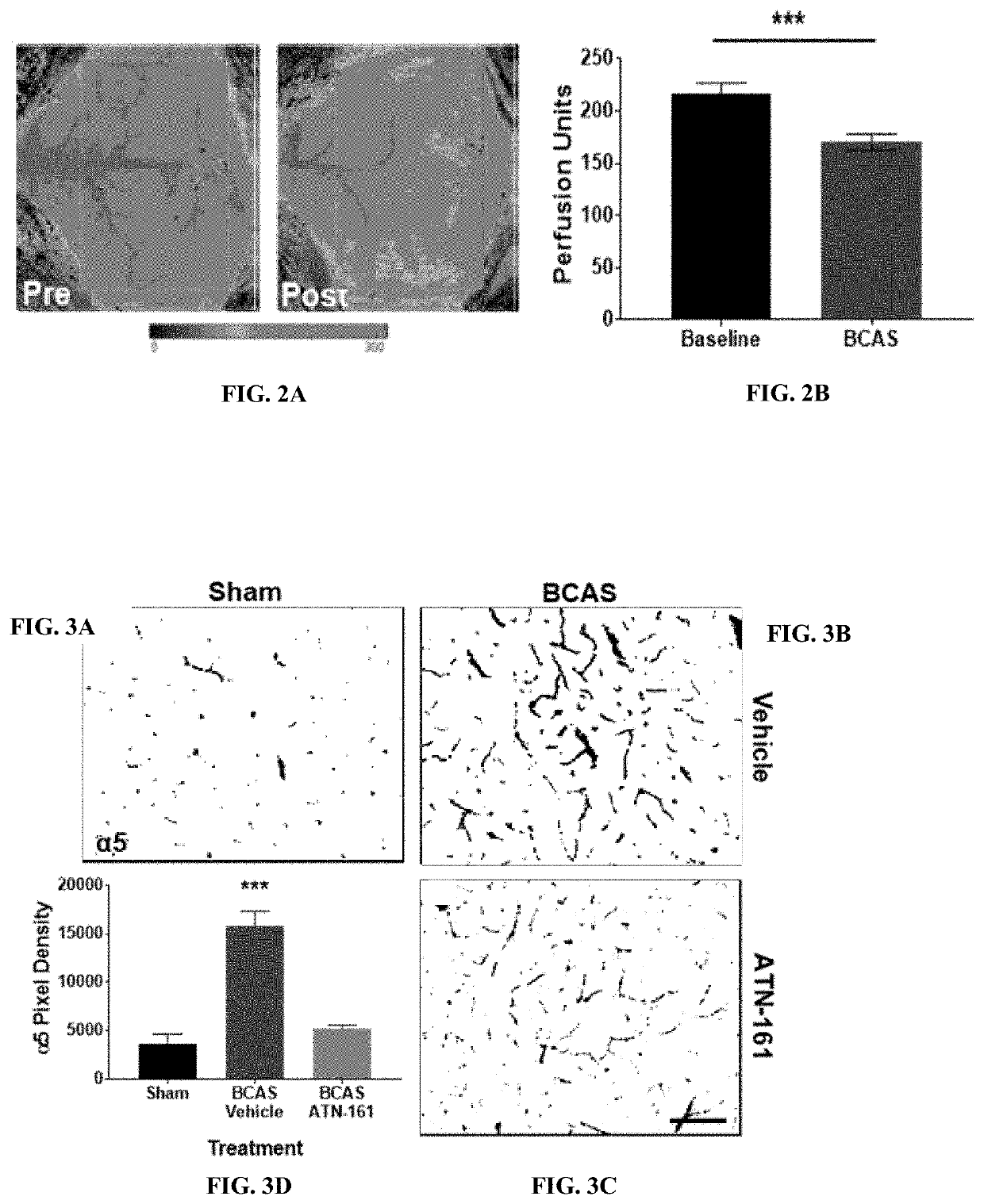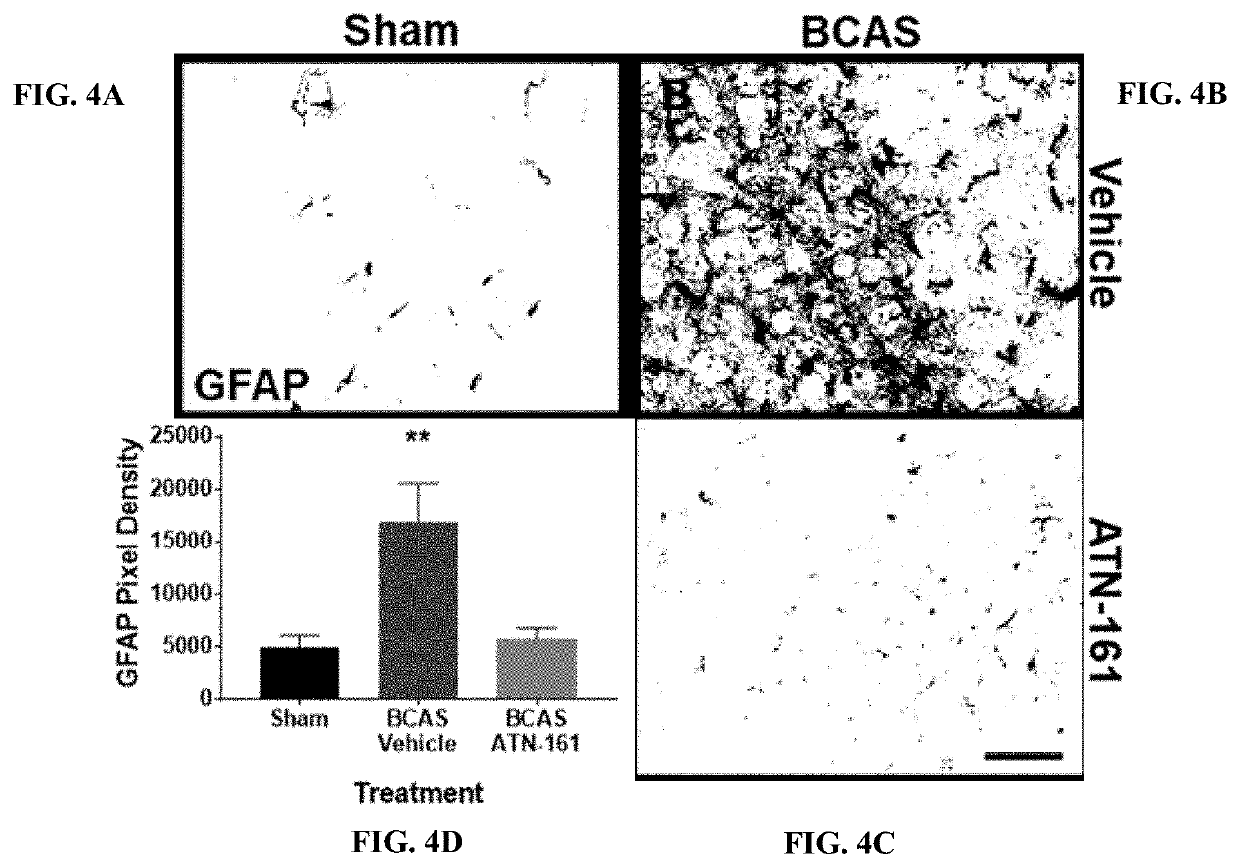Inhibition of alpha5beta1 integrin with atn-161 as a novel therapy for vascular dementia
a vascular dementia and atn-161 technology, applied in the direction of peptides, drug compositions, peptides, etc., can solve the problems of increasing neuronal cell death, affecting collateral flow compensation, and brain dysfunction, so as to reduce edema and infiltration of inflammatory cells, reduce infarct volume, and increase edema
- Summary
- Abstract
- Description
- Claims
- Application Information
AI Technical Summary
Benefits of technology
Problems solved by technology
Method used
Image
Examples
embodiments
[0081]In one embodiment, the present invention relates to a method of treating or preventing a hypoperfusion related disease in a subject in need thereof, comprising: identifying a subject with cerebral hypoperfusion and administering an effective amount of an α5β1 integrin inhibitor to the subject. In a further embodiment of the present invention, the hypoperfusion related disease is neuro inflammation, dementia, or cognitive impairment. In other embodiments of the present invention, the α5β1 integrin inhibitor is selected from: AST-161, Ac-PhScN-NH2, CRRETAWAC, or combinations thereof. In other embodiments, the α5β1 integrin inhibitor is AST-161. In some embodiments of the present invention, the cerebral hypoperfusion is chronic or acute. In a further embodiment of the present invention, the cerebral hypoperfusion fully or partially occludes vasculature. In some embodiments of the present invention, the cerebral hypoperfusion is caused by a stroke. In further embodiments of the pr...
example 1
dministration as a Treatment for Vascular Dementia
[0116]At 14 days post-stenosis increased BBB permeability (Evans blue leakage), increased glial cell inflammation, and increased cell proliferation within the striatum and cortex. Interestingly, it was also observed a significant increase in endothelial cell α5β1 integrin expression at 14 days post-stenosis (FIG. 3A-FIG. 3D).
[0117]Preliminary data show that inhibition of α5β1 integrin with ATN-161 treatment in the BCAS mouse model not only decreases α5β1 integrin expression compared to controls (FIG. 3A-FIG. 3D), but also decreases inflammation (astrocyte activation) within the white matter (FIG. 4A-FIG. 4D), and improves cognitive outcome (y-maze) as compared to controls (FIG. 5).
[0118]In a previously published study there was not noted significant changes in either BBB integrity or brain α5β1 integrin prior to day 14 after BCAS. However, in initial BCAS ATN-161 study (FIGS. 3A-3D, FIGS. 4A-4D and FIG. 5), ATN-161 treatment began im...
example 2
dministration for the Treatment of Stroke
[0120]ATN-161 Treated Mice Show Reduced Infarct Size Following Experimental Ischemic Stroke
[0121]First, it was determined whether acute, post-reperfusion IP ATN-161 administration was safe immediately following experimental ischemic stroke. ATN-161 treated animals did not show any differences in heart rate (FIG. 7A), pulse distension (FIG. 7B), body temperature (FIG. 7C), and body weight (FIG. 7D) following ischemic stroke compared to Vehicle treated stroked controls.
[0122]Once acute safety was determined, stroked mice were IP administered Vehicle or ATN-161 immediately after reperfusion, on PSD1, and PSD2 (FIG. 7G). By TTC assessment, mice treated with ATN-161 had smaller infarcts when including edema, on PSD3 (FIG. 7E-F; p=0.0004; ATN-161 16.3714.25, n=12; Vehicle 35.4114.04, n=12).
[0123]To further validate ATN-161 effects on infarct volume in a translationally relevant manner, stroked mice underwent DTI with ADC imaging on PSD3. Infarct vo...
PUM
| Property | Measurement | Unit |
|---|---|---|
| time | aaaaa | aaaaa |
| time | aaaaa | aaaaa |
| volumes | aaaaa | aaaaa |
Abstract
Description
Claims
Application Information
 Login to View More
Login to View More - R&D
- Intellectual Property
- Life Sciences
- Materials
- Tech Scout
- Unparalleled Data Quality
- Higher Quality Content
- 60% Fewer Hallucinations
Browse by: Latest US Patents, China's latest patents, Technical Efficacy Thesaurus, Application Domain, Technology Topic, Popular Technical Reports.
© 2025 PatSnap. All rights reserved.Legal|Privacy policy|Modern Slavery Act Transparency Statement|Sitemap|About US| Contact US: help@patsnap.com



